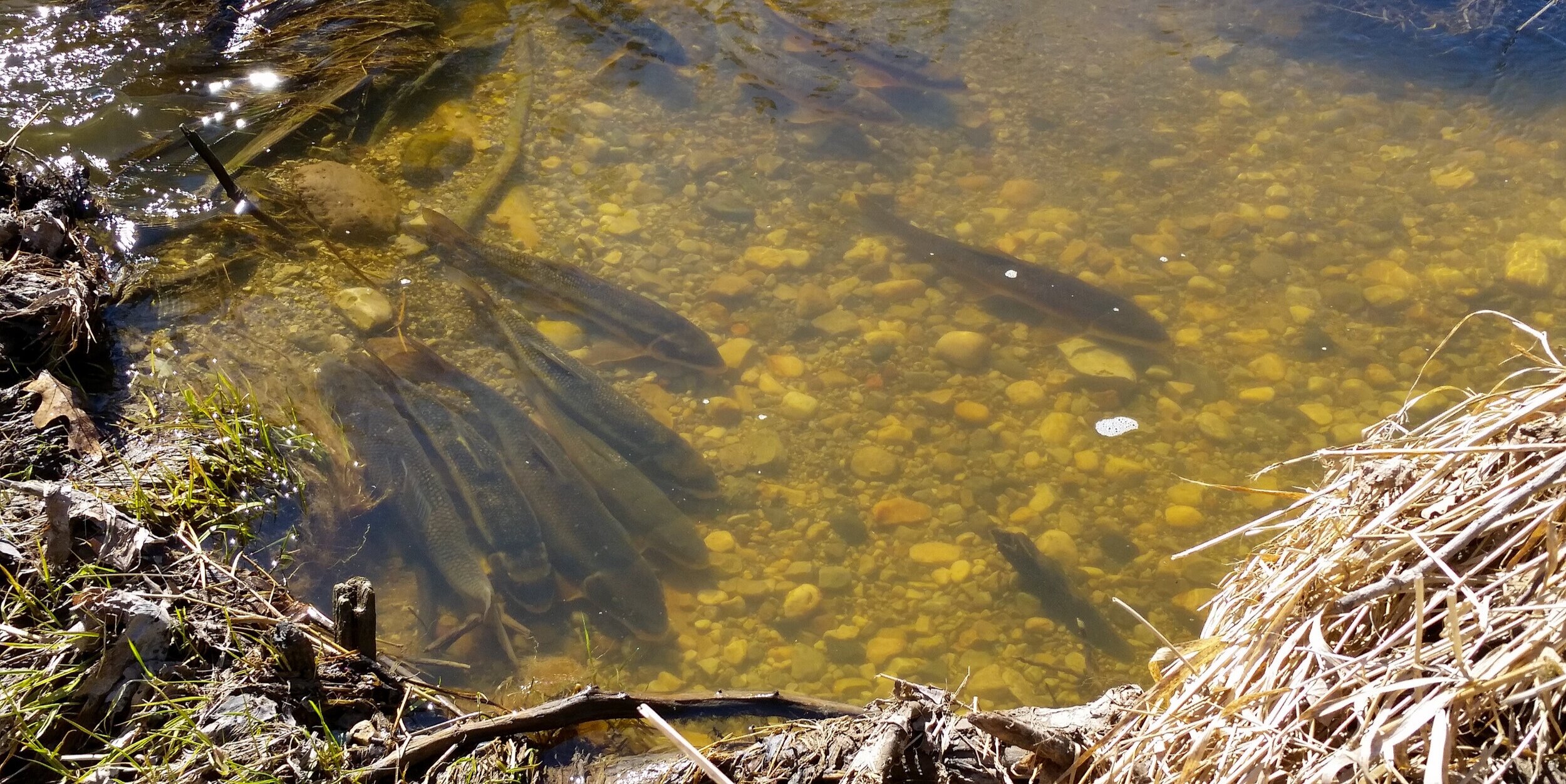
What is
Hika Bay
The watersheds of Hika Bay are all part of the Sevenmile – Silver Creek Watershed. Friends of Hika Bay decided to focus on the watersheds between Sevenmile Creek in Sheboygan County and Silver Creek in Manitowoc County. The targeted watersheds include Centerville, Fischer, Point, Pine, and Calvin Creeks, all which flow directly into Lake Michigan. The predominant land use in the watershed is agriculture, with dairy farming accounting for the majority of the agricultural operations. Some suburban development occurs primarily in the northeastern portion of the watershed near the city of Manitowoc. The incorporated villages of Cleveland, Haven and Newton are within the watershed.

HIKA BAY
History
hika dam
Hika Bay Dam
The original dam, a wooden structure, was constructed in 1864 by Gottlieb Mill. He and his brother John had had a dam and saw mill on Fischer Creek. This dam was washed out in 1894 and the area was abandoned. The Hika Dam remained in place until 1906 when a concrete dam was built. A saw mill, lumber yard, and flour / grist mill were built on the northern bank below the dam, using water power. The flour and feed mill operated until 1914. August Keune who was raised on the south side of the dam operated the flour and feed mill. In 1922, the lumber yard moved to Cleveland because of the railroad being there.
The Hika Dam washed out in 1924. After two successful money making picnics, the present dam was built in 1935 and dedicated on August 9, 1936. In 1942, a heavy rainfall washed away the soil at both ends of the dam. The waters along the north side of the dam were so turbulent that the foundation of the mill was undermined. It collapsed and floated into Lake Michigan. The waters back up from this dam went about a mile to the west and north to the confluence of the two branches of Centerville Creek.
centerville creek
Tree Planting at the Centerville Creek Corridor Project
Centerville Creek is a tributary to Lake Michigan and flows through the Village of Cleveland in southeast Manitowoc County. In the 1880s, a small gristmill dam was constructed on the main stem of Centerville Creek approximately 800 feet upstream of Lake Michigan. A larger concrete dam was constructed in 1935 impounding approximately 12 acres of the stream. In 1996, the impoundment was drawn down and the Wisconsin DNR removed the dam, leaving most of the sediment in place.
Beginning in 2009, plans were developed to restore the abandoned millpond and recreate a meandering creek. Funds were obtained through the Sustain Our Great Lakes program, corporate sponsorships, and private donations. Reconstruction began in 2012 with native landscaping and tree planting completing the project in 2013. The Centerville Creek Restoration Project removed 150 years of sediment buildup and restored 0.6 miles of the Centerville Creek. Complementary ongoing projects include enhancing a small ridge-swale community in the Hika Shores area of the park and building a bridge spanning the creek to join the southern and northern portions of Hika Park. A boardwalk with interpretive signage and a kiosk showcasing local businesses will also be constructed. Hika Park was “officially” expanded from 2.2 acres to 13.8 acres and now includes the original Boat Landing, Hika Shores, and the Centerville Creek Corridor.
hika bay tavern and union house
In 1899, Hugo Schurrer established the Hika Bay Tavern and Union House which stands at 252 Lincoln Avenue in the Village of Cleveland. Born in Germany in 1867, he came to the United States in 1885 first staying in Milwaukee before ending up in Cleveland, Wisconsin. At that time the Village of Cleveland was just a stop on the Lake Shore railway. After a few different ventures, Schurrer established his tavern in the building now known as Hika Bay.
Union House Tavern in the early 1900s
Within the Hika Bay building or better known as the Union House was a tavern, rooming house, dance hall, and barbershop (for a short time). It consisted of nine rooms upstairs and three on the lower level. After 1944, the rooming house and meals that were once served stopped as “food was hard to get.”
Beyond the Union House, Schurrer was the town constable for thirteen years, a substitute mail carrier for fourteen years, and the town treasurer for two years. Upon his passing in 1961, at 94 years of age, he was the village’s oldest resident and the oldest tavern license holder in the state. In 1972, the Union House was sold out of the Schuerrer family and the name was changed to Hika Bay Tavern and Union House. It was sold again in 1975 to the current owners, Mr. and Mrs. Gilmore Miller.



